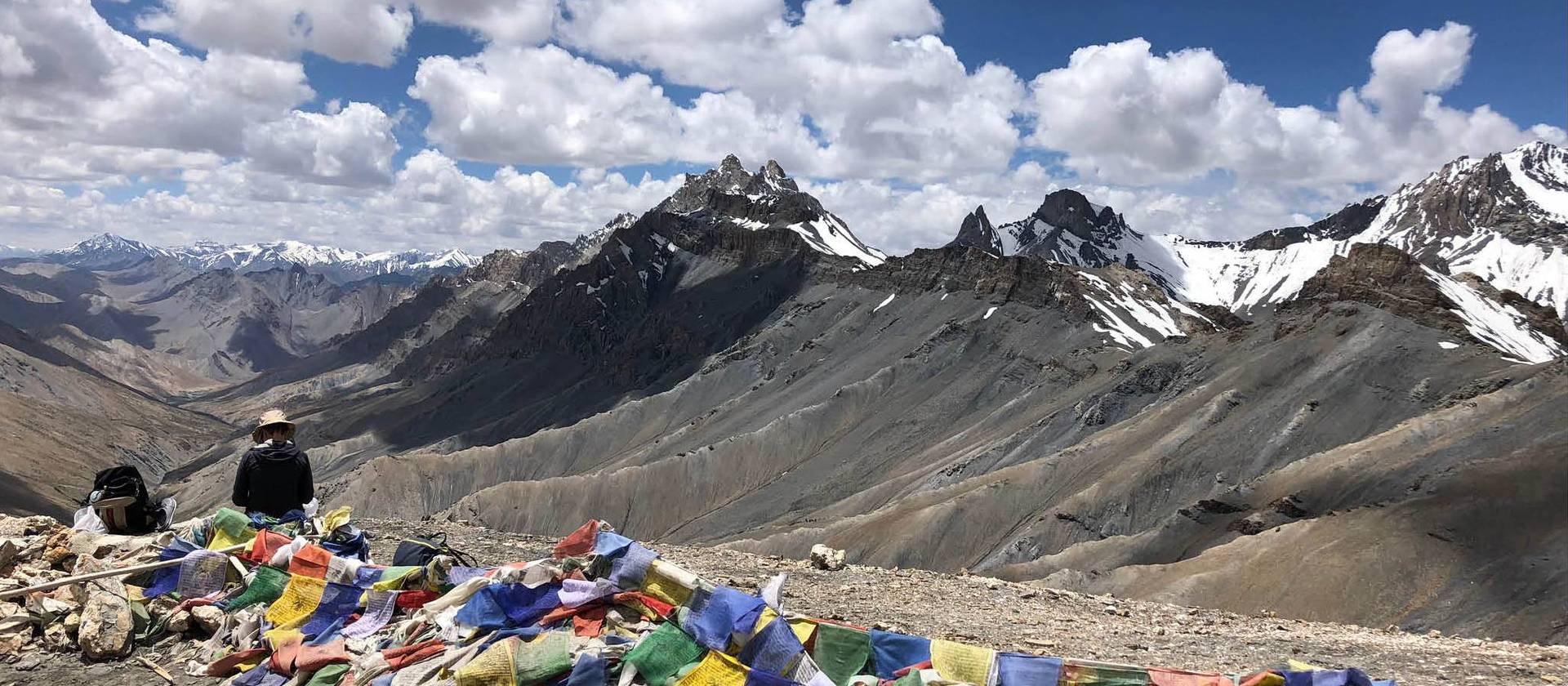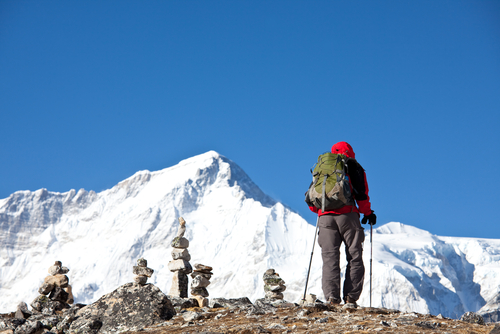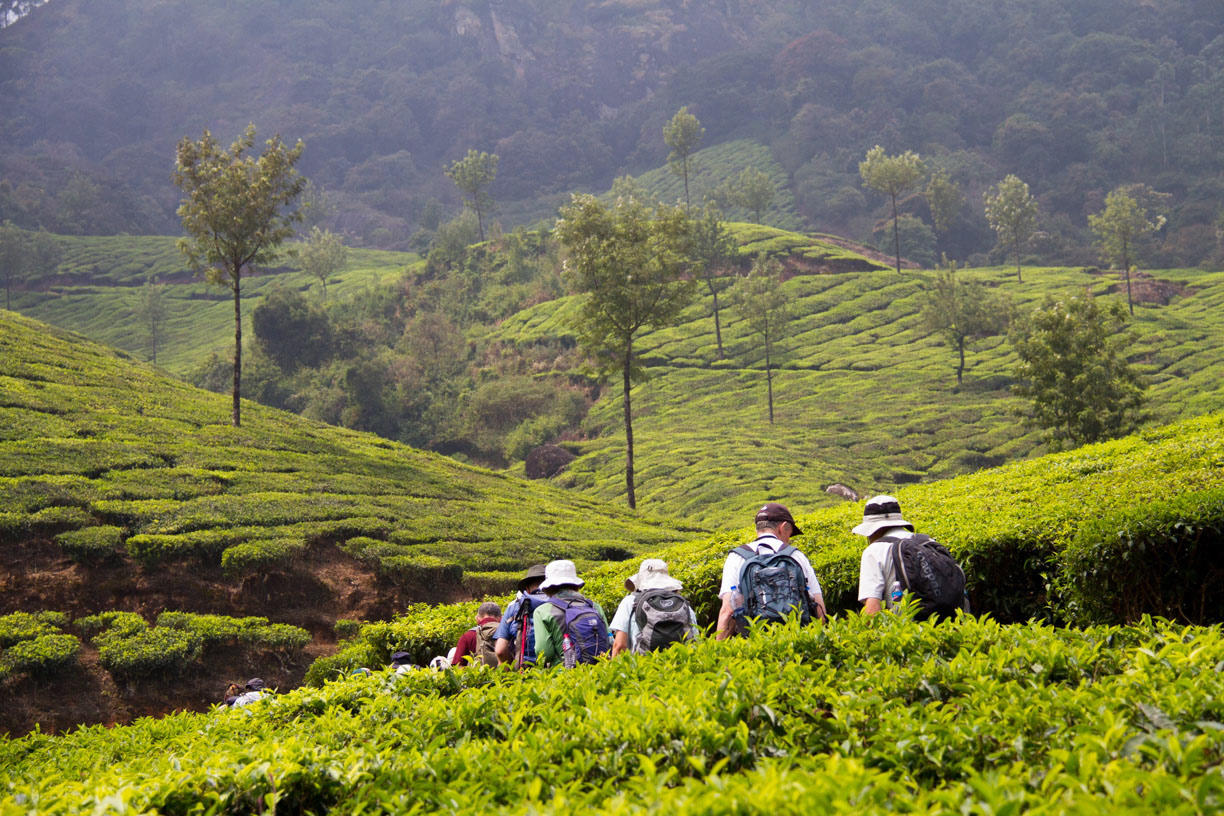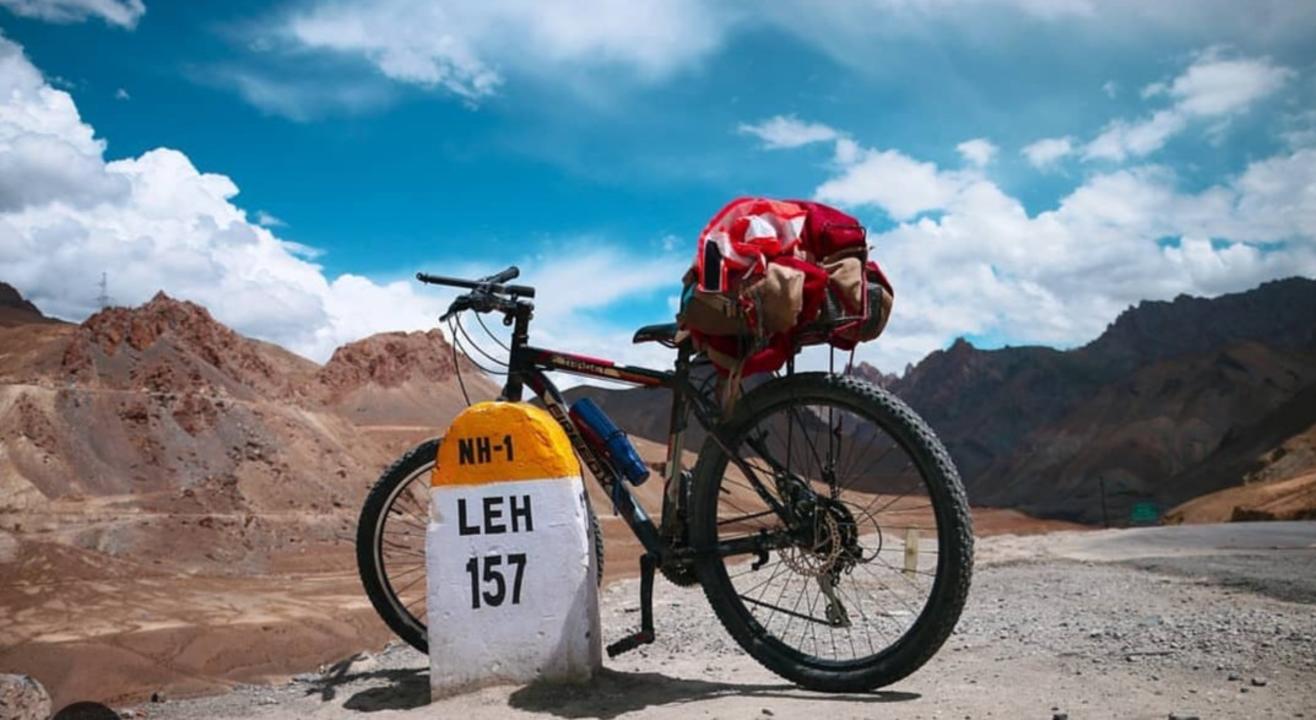
Markha Valley Trek
Markha Valley in the Hemis National Park of Ladakh is an unexplored paradise. Our specially-crafted 13-day Markha Valley Trek is the most beautiful journey in the mountains. Villages and gompas line up along the Markha River. Trek by Chilling in the valley of the Zanskar river through the green Markha valley. Pass through the alpine pasture of Nimaling under the 6000m Kang Yatse and cross the 5236-meter-high Kongmaru pass. Experience landscapes of great beauty marked with fertile oases, rugged rocks, and ice-covered mountains. The friendly Ladakhis and shepherds, teach lessons about the simple way of life in the Himalayas. Hemis National Park is also an animal and plant paradise. With bright barley fields, blooming flower meadows and Edelweiss on stony ground. With colorful bird species, Marmots and rare blue sheep. A refuge for ibex and the snow leopard, of which there are said to be fifty in the national park. The cultural highlights include the old monasteries Hemis and Thiksey in the valley of the Indus River and the new Shanti Stupa near Leh.
- Tour Duration: 12 Nights / 13 Days
- Places Covered: Leh(3) > Skiu(1) > Markha(1) > Thachungtse(1) > Nimaling(2) > Chokdo(1) > Leh(1) > Delhi(2)
-
Day 1: Arrive Delhi and Delhi - Leh by flight
Arrive in Delhi early in the morning. Meet, greet and assist on arrival and transfer to the domestic terminal to connect flight G8 departure Delhi 05:45 hours and arrival in Leh at 07:10 hrs. Leh is the capital of the Ladakh region. A dream destination of adventure enthusiasts, it is one of the coldest deserts in the world is known as the 'land of high passes' and 'the rooftop of the world'. Leh City is known by the popular landmark of the ruined Leh Palace, the former mansion of the royal family of Ladakh On arrival at Leh Airport, meet and get assistance for transfer to the hotel. The rest of the day at leisure to acclimatize to the altitude of 3500 m above sea level and the thin air. A walk through Leh Market is suggested late afternoon. The market stands on the shadows of Leh Palace that dominates the Skyline. The stores are distinctly window-dressed and each is a head-turner letting visitors pause and ponder at each step. In fact, everywhere you cast a glance, a bargain sits pretty. Sidewalks too are filled with stalls of semi-precious stones, an assortment of jewelry and plethora of reproduced and some genuine antiques, all translating in to perfect souvenirs. The sidewalks are lined with women in traditional Ladakhi dress selling fresh vegetables which is a luxury as the producing months are short and nothing is available in harsh winters. Meals – Breakfast, lunch & dinner. Overnight hotel.
-
Day 2: Leh - Shey/ Thiksey - Leh
The day is planned to experience life at the monastery. The royal palace of Shey, strategically located on a rock above the Indus, former summer residence with Mani walls, palace ruins and choirs, was the political center of Ladakh until 1470. Marvel at a 350-year-old copper and gold Buddha statue, the largest in “Kleintibet”. Then take a short hike to Thiksey, the important monastery belongs to the Gelugpa school and towers imposingly on the top of a hill. Thiksey is the miniature version of the Potala Palace in Lhasa. In the prayer hall, the Buddhists worship a rare representation of the "Buddha of the future". Meals – Breakfast, lunch & dinner. Overnight stay in the hotel.
-
Day 3: In Leh
In and around Leh you take short and relaxing excursions and also improve your acclimatization. The old royal palace on the Namgyal hill is just as worth seeing as the small Tsemo Gompa and the rather modern Shanti stupa. Behind it rises the Stok Kangri massif, over six thousand meters high - which you can hike during the trek. You enjoy the view of the mountains and the valley of the Indus River with the capital of Leh and scattered villages. In the afternoon there is time for a stroll through the bazaar. During sightseeing and walks, you get used to the height of body and mind. Meals – Breakfast, lunch & dinner. Overnight stay in the hotel.
-
Day 4: Drive to Chilling -
Trekking to Skiu
Drive (60 km / 2 h) along the mighty Indus River, later along the Zanskar River, to Chilling, 3210 m. Luggage that is not needed on the trekking remains in the hotel's room. The Zanskar River is crossed at Chilling. The companions with the pack animals are already waiting for you on the other bank. The cultural and mountain hiking guide takes care of the distribution of the loads. Then the Ladakh trekking begins, which will take you through Hemis National Park for a week. Slow ascent to Kuki La (La = Pass), 3420 m. Here the view of the Markha Valley opens. Now leave the Zanskar River "on the left" and descend along the Markha River. You will pass the settlement of Kaya with the ruins of an old gompa (gompa = monastery). Finally, the daily goal of Skiu is reached. The pride of the small settlement is the new monastery from the nineties of the past century. The tent camp is being built for the first time at an altitude of 3340 meters. And in the evening the cook serves a tasty three-course menu with simple means. Meals – Breakfast, lunch & dinner. Overnight stay at the tents.
-
Day 5: Skiu – Markha
Hike upstream through the Markha Valley. The green alluvial land is fertile and offers ideal pastures for the pack animals. Mani walls and old choirs, most of them decaying, can be found along the way. According to Sara, an abandoned gompa with red-colored horns impresses. Bushes alternate with green barley fields and all kinds of wild herbs. The country is green and fragrant. The Markha River is crossed several times today, partly on bridges and then again in the riverbed, whereby the water can be knee-deep depending on the weather. You will pass the Chaluk and Tangit settlements. Then the big town of Markha comes into view. The tents will stand under the ruins of the dilapidated castle at an altitude of 3800 meters. The Markha Chu mountain stream descends from the six-thousand-meter Shuko Kangri. Maybe you roam the stately settlement in the afternoon. In conversation with the local population you will learn a lot about the simple life in Ladakh - your cultural and mountain hiking guide makes the contacts. A visit to the gompa with beautiful frescoes is also worthwhile. Meals – Breakfast, lunch & dinner. Overnight stay at the tents.
-
Day 6: Markha – Thachungtse
The trek today remains exciting because today you are dealing with some river crossings. Colorful birds show up: wagtail, red tail, hoopoe. On the way up to Hankar, you can perhaps visit the Tsetang Gompa high above the river valley. You cross the arid high desert before the terrain becomes mountainous step by step. The six-thousand-meter Kang Yatse stands wonderfully at the end of the valley. Finally, steep switchbacks lead up to a stupa. From here you have a clear view of the fields of Thachungtse. Descent to the campsite on a wide pasture site. 4300 m. The Hemis National Park is an important habitat for many wild animals such as Argalis, Siberian ibex and Ladakh urials with their distinctive horns. Around fifty snow leopards have found a retreat in the park. The chance, to be able to observe one of the shy irbites in the wild is small. If you are lucky, you may spot long-tailed marmots or rare blue sheep today. Meals – Breakfast, lunch & dinner Overnight stay in tents.
-
Day 7: Thachungtse – Nimaling
Today's trek promises a lot of variety. Continue uphill past bizarre earth pyramids that have washed wind and weather out of the rock. Edelweiss feel comfortable on the stony ground. A small mountain lake invites you to a welcome lunch break. Ascent to the alpine pastures of Nimaling, 4850 m, where the valley opens. In the summer months, shepherds graze their herds: sheep, goats and dzos; they live in stone huts and offer fresh yoghurt and delicious cheese for sale. In the evenings, after the animals were driven into the valley from the surrounding slopes, you can see them walking through the tent camp - always looking for something to eat. The dominant mountain shape is the Kang Yatse, 6400 m, with its many side peaks. In the afternoon you can climb a bit to a viewpoint, where there is a particularly good view of the glaciers. You will spend two nights in this beautiful place. Meals – Breakfast, lunch & dinner. Overnight stay in tents.
-
Day 8: Nimaling
Rest and reserve day. The deserved rest day that you can use for rest and relaxation. The hilly pastureland is extensive and extends to the six thousand meter Kang Yatse. In addition to the two main peaks, the massif has four further elevations over six thousand meters. You enjoy the great view of the fascinating mountain and glacier world of Ladakh and maybe climb up to the Kang-Yatse base camp, 4970 m. Or you follow the Nimaling Chu upstream to the base camp for the Regoni Mallai Ri, 5100 m. Excursions that keep giving you new, spectacular views of the icebergs in Hemis National Park. In the Nimaling camp, you will be well catered for from the trekking kitchen and enjoy the free time in one of the most beautiful spots of the Himalayas. Meals – Breakfast, lunch & dinner. Overnight at the tents.
-
Day 9: Nimaling - Kongmaru La – Chokdo
The “royal stage” on this Ladakh trekking undoubtedly represents the crossing of Kongmaru La. As you ascend to the pass, the view of the mountains, which are shown in all colors, becomes more and more magnificent. Edelweiss are in bloom and gentian. Finally, the last upswing in serpentines, then the lucky prayer flags are reached on the pass, 5236 m. The view falls back on the 6400-meter-high Kang Yatse, the highest peak of the Ladakh Range. Many other Himalayan sizes emerge from the mountain ranges that line up wave by wave. These include the seven-thousand-meter Nun and Kun and the ice giants of the Stok Kangri group. If visibility is good, you can even see the Karakoram Mountains in the north. The Kongmaru La connects the Markha with the Indus valley. In snow and storm, exceeding it can also become a demanding company. Descent in many hairpin bends and through a gorge into the arid high valley of Chokdo, 4150 m, where a magnificent gorge with beautiful, purple-colored rock faces awaits you. You can hardly see enough of this natural spectacle! Together with your cultural and mountain hiking guide, you roam the place and get into a conversation with the residents over a glass of tea. And in the evening you can say goodbye to your companions at a small party. Meals – Breakfast, lunch & dinner. Overnight stay in tents.
-
Day 10: Chukdo - Shang Sumdo | Drive via Hemis to Leh
Trekking in Shang Sumdo, 3690 m is the short final stage. You actively participate in the environmental program of the DAV Summit Club and take back problem waste like batteries. The dirt bag, which you receive with the travel documents, provides valuable help. Pick up vehicles and take you to Hemis Monastery, which gave the national park its name. It is the largest and richest monastery in the country. The pilgrimage route between long mani walls leads to the famous sacred buildings. The monastery tour shows large halls, wall paintings and a five-meter-high, fire-gilded Buddha Shakyamuni. The scent of butter lamps and incense sticks is in the air. Then the bus (total 70 km / 2 h) will take you to the already known hotel in Leh, 3500 m. After the days in the high mountains, you can look forward to the amenities of civilization. Meals – Breakfast, lunch & dinner Overnight stay in the hotel.
-
Day 11: Leh - Delhi ( by flight)
Board the flight to Delhi. It goes down pretty well, from the mountains of Ladakh to the vast steppes on the Yamuna river. Sightseeing and shopping at will. A trip to Agra, the former capital and residence of the Mughal emperors with a visit to the famous Taj Mahal tomb, can be undertaken on an optional basis (booking and payment on site). Alternatively, enjoy your free time in Delhi as you wish. Meals – Breakfast & dinner Overnight stay in the hotel.
-
Day 12: In Delhi
After the breakfast, the tour guide will pick you up from the hotel and take you for a guided sightseeing of Old and New Delhi. This tour includes the following places: Red Fort: The term Red Fort is taken from a Hindi word Lal, which means red and Quila which means fort. The structure of the Red Fort is very uneven and it is placed in an octet shape along the Yamuna River. This fort is delimited by a wall of about 2.4 km in perimeter and is constructed of red sandstone. In 1638, Shah Jahan started building this huge fort and it was completed in 1648. The fort has a Diwan-e-Am (Hall for public audience), a Rang Mahal (a water- cooled apartment of royal ladies) and a Pearl Mosque, which was constructed with white marble. Red fort has two main entrances the Delhi Gate and the Lahori Gate, and both this gates face the renowned Chandni Chowk. Jama Masjid: Jama Masjid is one of the country’s major mosques where hundreds and thousands of Muslims offer their prayers even today. Jama Masjid was constructed by Shah Jahan as an architectural extravaganza in 1658. The wonders of construction in Jama Masjid are seen in the long stretches of stairs and the hefty courtyard. Chandni Chowk (Silver Street): Chandni Chowk is well-known for its colorful streets with the famous shopping spots of Old Delhi. It also has the country’s best known extensive market for textiles, electronic goods and watches. Entire Chandni Chowk was designed by Jahanara Begum, Shah Jahan’s beloved daughter and was then populated by the well-to-do families of that time. The famous Paranthawale Gali, known for its mouthwatering paranthas is also located in Chandni Chowk. The famous gold market, Dariba Kalan is also situated here. Raj Ghat: An elementary square platform of black marble on the banks of Yamuna River, symbolizes the spot where Mahatma Gandhi was cremated followed by his assassination in 1948. A dedicatory ritual takes place each Friday, in his memory. Birla Mandir: Birla Mandir is a major prayer site and comprises of idols of numerous divinities. It is situated close to Connaught Place. Birla Mandir was constructed in 1938, by an industrial Raja Baldev Birla. India Gate: India Gate is a free standing, 42 meter high arch. It was built in 1931 and was formerly called the All India War Memorial in the memory of the 90,000 soldiers of the Indian Army who died in World War I. The names of the warriors are engraved all along the walls of the arch. The eternal flame was lit here to honor the Amar Jawan (Immortal Soldier), in 1971. Rashtrapati Bhavan (President’s House): Rashtrapati Bhavan is the authorized residence of the President of the country. It was designed by Lutyens, and was the official residence of the Viceroy when the British ruled India. Humayun’s Tomb: Nine years after the death of Humayun, Haji Begum (widow of Humayun) built this tomb in 1565-66 in his memory. Qutub Minar: This outstanding building in the Southern part of the capital was built by the Muslim King; Qutab–ud–din Aibak in 1199 A.D. The Minar (tower) is 72.5 meters tall and its base is a mosque. Bahai’s Temple: It is a very new architectural marvel of the Bahai cult. This temple is visible from quite a lot of spots in South Delhi. This temple is moulded in the shape of a lotus and has precisely been given the name. Overnight stay in Delhi.
-
Day 13: Delhi Departure
Board flight to return home with cherished memories of your trip.

Date & Price
Price
| Period | Standard |
|---|---|
| Valid from 01 Apr to 30 Sep | $ 1386 Per Person |
- Domestic airfare: USD 181 per person
Accommodation
| Cities | Standard |
|---|
Important Information
- 02 Paying pax Travelling Together - USD 1594 Per Pax
- 03 Paying Pax Travelling Together - USD 1512 Per Pax
- 04-06 Paying Pax Travelling Together - USD 1308 Per Pax
- 07-09 Paying Pax Travelling Together - USD 1227 Per Pax
- 10-14 Paying Pax Travelling Together - USD 1168 Per Pax
- Supplement Airfare Delhi- Leh- Delhi in economy class (Airfare strictly subject to change without notice). - USD 181 Per Pax
Inclusions & Exclusions
Inclusions
- Accommodation: - Sharing a twin or double room/ tent for 12 nights.
- Meals:- Full board basis in Leh and during the Trek beginning with lunch on Day 01 and ending with breakfast. Lunches will be packed meals on trek.
- Transport:- Using non air-conditioned Toyota Innova Cars for all services in Ladakh including drop/ pick up for trek (3 pax to a car) per programme and air confitioned Toyata Innova in Delhi.
- Assistance & Portages:- Meeting and assistance on arrival/departure at airports, hotels by Trans India Holidays representative and portages at hotels for one standard baggage per person included.
- Entrances: - Entrances at monuments/ Monasteries and places of visit per programme only and for one time visit. Trek permit fee, Inner line fee etc.
- Guides: - Accompanied English speaking trek guide in Ladakh for the sightseeing and trek portion.
- All trekking arrangements including camping fee.
Exclusions
- Sleeping Bags (will have to be brought by the guests)
- Personal clothing/ trek gear including trek shoes etc
- Any insurance cover against accident, sickness and evacuation
- Any airfares, airport taxes and supplements quoted separately if applicable
- Expenses of personal nature like table drinks, telephone calls, laundry, tips to drivers, guides and hotel staff.
- Any Camera fee still or video







